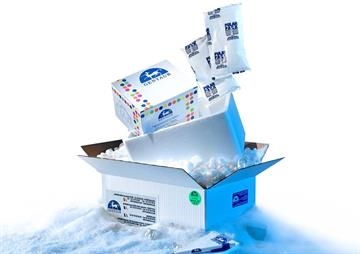- Categories
- Specials and Offers
- Custom Services
- Products
Luciferase(Puromycin) Report Cell Line-CFPAC-1


Luciferase(Puromycin) Report Cell Line-CFPAC-1
0.01 €Ask for quotation
On request
quantity
product details
Catalog number: 870 - ABC-RC132D
Product Category: Business & Industrial > Science & Laboratory
AcceGenGentaur
Size: 1 vial
Related Products
ABC-RC132D
Luciferase(Puromycin) Report Cell Line-CFPAC-1
Transformed from human human pancreatic cancer cell line, CFPAC-1 adhesive epithelial cell, using lentivirus expressing firefly luciferase 3 gene. The Luciferase was expressed under the enhanced EF1a promoter. The Puromycin marker was expressed under Rsv promoter. The cell line demonstrates high level of bioluminescence signal via firefly luciferase assay.
Ask for quotation
ABC-RC127D
loxP-GFP-RFP(Bsd) Report Cell Line-HEK293
The CRE reporting cell lines are used to monitor or confirm the efficiency of CRE recombination in vivo. It is a great method and easy tool to verify the performance of your CRE enzyme(your CRE expression plasmids, or pre-made CRE expression lentivirus, or purified CRE enzyme) in vivo conditions. It is also a control test to verify your CRE-loxP based system. Transformed from HEK293 cells, expressing "LoxP-GFP-stop-LoxP-RFP" cassette under CMV promoter(see Color-Switch cassette below). Cell line also contains a blasticidin antibiotic marker under RSV promoter.The cell line demonstrates strong GFP fluorescent signal in normal culture condition as the constitutive CMV promoter drives the GFP high expression to the stop codon. The downstream RFP ORF was not expressed because of the stop codon after the GFP ORF. Once the CRE protein was present in nuclear, the CRE excises/deletes the DNA fragment between two loxP sites, which removes the stop codon(see the DNA structure scheme above). As a result, the RFP ORF is then expressed under the CMV promoter, and the cell line switches to RFP fluorescent. The RFP signal can be easily monitored via fluorescent cell sorting(for the ratio between GFP and RFP cells), or visualized under microscope, or measured the fluorescent intensity by a meter or reader with RFP filter set.
Ask for quotation
ABC-RC128D
loxP-GFP-RFP(Neo) Report Cell Line-HEK293
The CRE reporting cell lines are used to monitor or confirm the efficiency of CRE recombination in vivo. It is a great method and easy tool to verify the performance of your CRE enzyme(your CRE expression plasmids, or pre-made CRE expression lentivirus, or purified CRE enzyme) in vivo conditions. It is also a control test to verify your CRE-loxP based system. Transformed from HEK293 cells, expressing "LoxP-GFP-stop-LoxP-RFP" cassette under CMV promoter(see Color-Switch cassette below). Cell line also contains a Neomycin antibiotic marker under RSV promoter.The cell line demonstrates strong GFP fluorescent signal in normal culture condition as the constitutive CMV promoter drives the GFP high expression to the stop codon. The downstream RFP ORF was not expressed because of the stop codon after the GFP ORF. Once the CRE protein was present in nuclear, the CRE excises/deletes the DNA fragment between two loxP sites, which removes the stop codon(see the DNA structure scheme above). As a result, the RFP ORF is then expressed under the CMV promoter, and the cell line switches to RFP fluorescent. The RFP signal can be easily monitored via fluorescent cell sorting(for the ratio between GFP and RFP cells), or visualized under microscope, or measured the fluorescent intensity by a meter or reader with RFP filter set.
Ask for quotation
ABC-RC129D
loxP-GFP-RFP(Puro) Report Cell Line-HEK293
The CRE reporting cell lines are used to monitor or confirm the efficiency of CRE recombination in vivo. It is a great method and easy tool to verify the performance of your CRE enzyme(your CRE expression plasmids, or pre-made CRE expression lentivirus, or purified CRE enzyme) in vivo conditions. It is also a control test to verify your CRE-loxP based system. Transformed from HEK293 cells, expressing "LoxP-GFP-stop-LoxP-RFP" cassette under CMV promoter(see Color-Switch cassette below). Cell line also contains a Puromycin antibiotic marker under RSV promoter.The cell line demonstrates strong GFP fluorescent signal in normal culture condition as the constitutive CMV promoter drives the GFP high expression to the stop codon. The downstream RFP ORF was not expressed because of the stop codon after the GFP ORF. Once the CRE protein was present in nuclear, the CRE excises/deletes the DNA fragment between two loxP sites, which removes the stop codon(see the DNA structure scheme above). As a result, the RFP ORF is then expressed under the CMV promoter, and the cell line switches to RFP fluorescent. The RFP signal can be easily monitored via fluorescent cell sorting(for the ratio between GFP and RFP cells), or visualized under microscope, or measured the fluorescent intensity by a meter or reader with RFP filter set.









